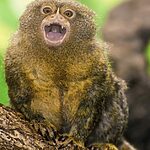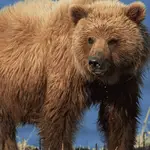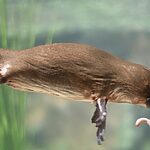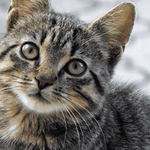While raccoons undoubtedly have a very unique appearance with their gray-brown fur and black and white mask covering their face, there are actually a fair few other animals that possess similar features and details that make them look very similar to this small and lovable mammal.
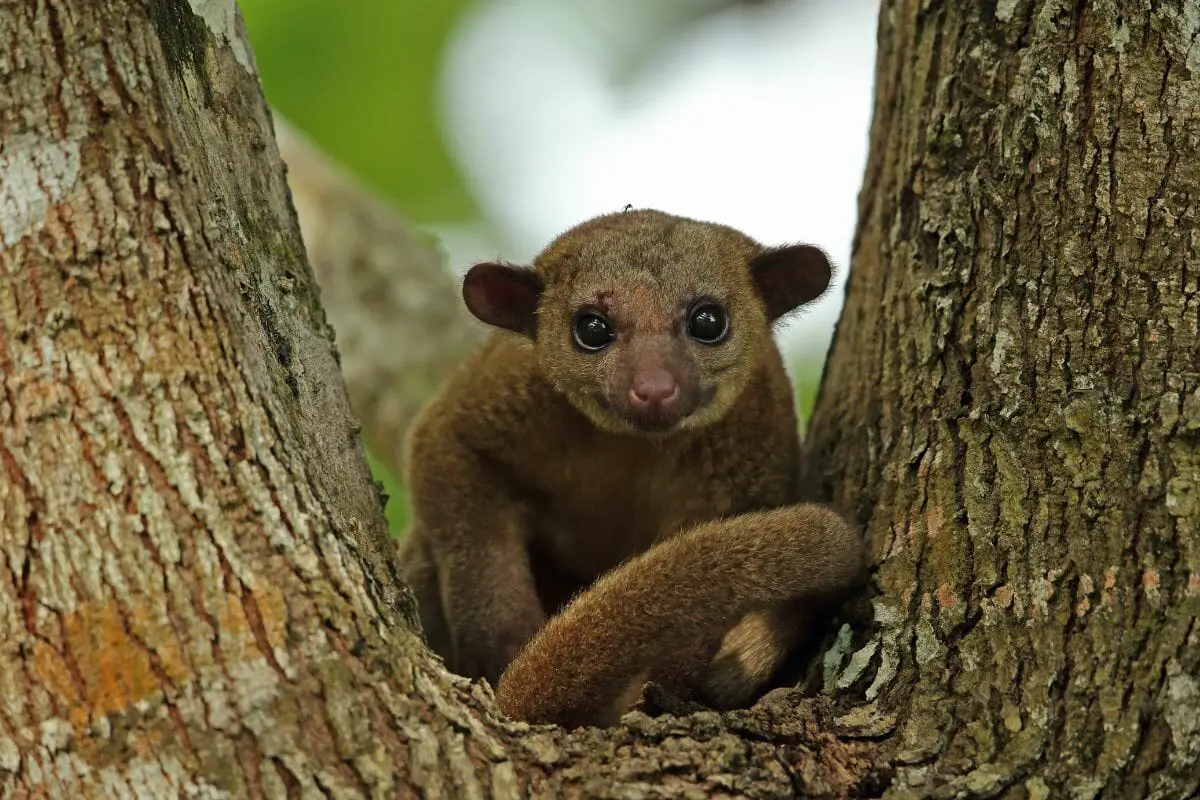
While some of these animals are similarly part of the Procyonidae family that the raccoons belong to, there are others that just happen to bear a resemblance while being entirely different in their way of life.
With that being said, here are some animals that will commonly be mistaken for the small and furry raccoon.
Kinkajous
Because of their slender body and fairly long limbs, some say that kinkajous which can be found in South America actually resemble monkeys more than anything else, however, they actually share far more physical similarities with raccoons, such as their five toes and sharp claws that help them to move around trees quickly.
Kinkajous are slightly smaller than their heavier counterpart, but they are actually much more sociable than raccoons, despite it being commonly believed that they were more solitary animals, recent behavioral studies have revealed a complex social system that is very similar to many other nocturnal animals.
Their long bushy tail also resembles the raccoons with the only major difference between these two animals being that kinkajous have a much lighter fur color and don’t share the rings on their tails.
Coati
When spotting a gray, black and white animal clinging and swinging among the trees, it can be easy to immediately think of a raccoon, however the coati also bears these colors since it is also a member of the Procyonidae family.
These small and round creatures can be found in several South American countries including Uruguay and Argentina, and despite coatis being active in the day and not being nocturnal like their cousins, they do still use the trees to get around.
With them being the same length and height as a raccoon, the only real way to tell a coati apart is by its longer pointy nose and slightly longer bushy tail.
Olingos
As the smallest relative of raccoons, olingos share a lot of physical similarities to their cousins, with the only real difference being their size.
While raccoons average between 24 to 38 inches in length once they reach adulthood, olingos rarely ever make it past 15 inches, which is why they are threatened by a large number of bigger predators in the wild such as tayra, snakes, and ocelots.
Other than their size though, olingos share the same long bushy tails, pointed muzzles and round ears as their cousins, and while they are missing the face mask, they also act a lot like raccoons, being very solitary and preferring to stay away from other raccoons while moving from tree to tree.
The only times these small and furry mammals can be seen with other raccoons is if it’s a potential mate that they enjoy climbing with.
Cacomistle
While these small nocturnal animals are found in Mexico rather than anywhere in North America, their grayish tan fur bares a striking resemblance to raccoons, along with both having very long and bushy tails and both being omnivorous and sharing the same diet of fruits, insects and small vertebrates.
Both are very similar in length and height, and cacomistle share the razor-sharp claws of the raccoon which they use to navigate rough terrain and primarily for climbing between trees.
The only major difference is that the cacomistles mask is a little lighter in its colors, with the black outer portion of their face being a much lighter shade, along with being skinnier and more squirrel-like in their stance and the way they move.
Raccoon Dogs
Also known as the Chinese or Asian raccoon dog, while raccoon dogs belong to the Canidae family as opposed to the Procyonidae, their robust bodies and black and white mask covering their face make them nearly identical to raccoons.
In Japanese culture, raccoon dogs are actually seen as more closely related to a fox, with the tanuki being a mischievous and jolly animal that is always causing trouble one way or another.
Their wide front paws also give them an excellent grip to navigate trees, just like raccoons, however one big difference is that raccoon dogs are a lot more sociable with them living and hunting in pairs or small family groups.
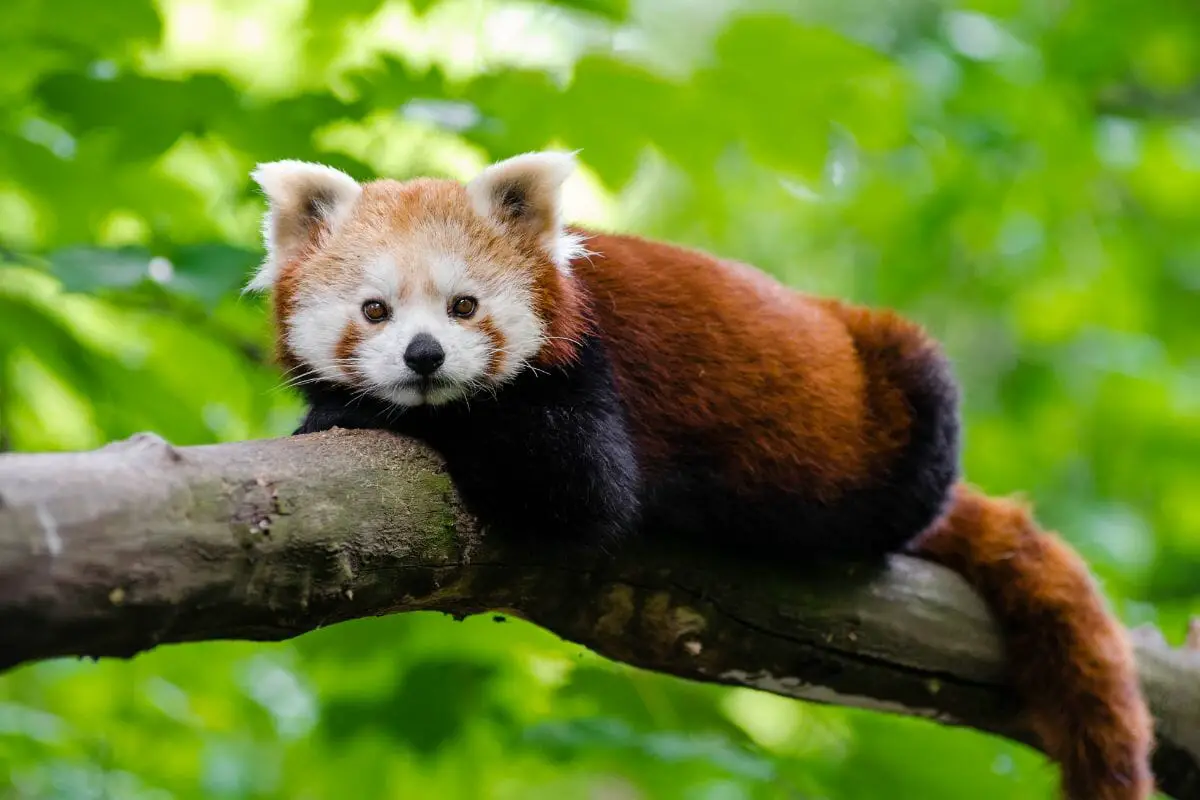
Red Panda
While the patterns on both the red panda and raccoons are near identical with their uniquely colored ears and multicolored face mask, the only difference is the actual colors themselves as while raccoons have black and white markings, the markings on the red panda are red and cream-colored.
Despite the difference in color, there is no denying that red pandas are still nearly identical to raccoons, not only in their look, but also in their solitary nature which has encouraged a fierce debate on how related these two animals (see also: Animals That Are Quiet But Fierce)actually are.
While they are not directly related, with them both belonging to different families, they are instead both part of an extended family, making them more like distant cousins which is what gives red pandas a slightly similar appearance.
Weasels
While weasels are another animal that does not belong to the same family as raccoons, instead belonging to the Mustelidae family of animals who are commonly found in various parts of Africa and Eurasia, DNA evidence has shown that they too are also vague relatives of the raccoon, which is why while they do share similar physical characteristics, the two live very different lives.
For example, while raccoons will usually only live around woodlands, forests, and mountains so that they can make use of the trees, a weasel can live in virtually any environment from open fields and farmlands, all the way to marshlands and swamps.
Their dexterous toes do still make weasels excellent climbers, which they share with the raccoon, and their slender bodies and elongated necks can mean they are easy to mistake for a raccoon from afar, however the main difference is not only do they not have a mask, but their brown fur is much lighter and more of a beige color.
Ringtails
Many describe the ringtail as a cross between a lemur and a raccoon, with its light grey fur and black and white long tail. They even have a white mask with black around their eyes along with a very small head and tiny pointed ears.
While both the ringtail and raccoons are natives of North America, ringtails are known as being better leapers and climbers, being able to traverse very tough terrain with ease, which is why they prefer to live in riparian and rocky canyons (see also: What Animals Are Waiting For You In The Grand Canyon?)rather than in forests or woodlands.
While they do share a therefore very similar appearance, the ringtail is a little more agile than the ringtail and can be spotted in slightly different kinds of environments.
Cacomistles
These small and shy nocturnal omnivores are close relatives of raccoons, and while they do have slightly different colored fur with there’s being a little lighter and more vibrant, they still share the similar long bushy tail, pointed nose, and rounded pointed ears that make them hard to tell apart.
This becomes an even harder task since cacomistles act extremely similar to their relatives, being solitary animals that only appear at night and sharing the same diet.
The only real difference between these two, and the best way to know if what you’re looking at is a raccoon or not, is by checking where they live.
While cacomistles are entirely arboreal and will exclusively live in trees, raccoons can live elsewhere, and will sometimes spend their days in hollow logs instead, making this the one characteristic that differentiates the two.
Northern Cacomixtle
With a range from southern Oregon all the way to Mexico, the northern cacomixtle on average is the same size as a squirrel, making it a bit smaller than the average raccoon in height and length along with it being much lighter, however, they do also possess a long bushy ringed tail, small pointed ears, a small head, and a black and white mask covering their face, giving them a striking resemblance to their distant cousins.
The cacomixtle is also nocturnal, with both these animals hunting at the same time for the same exact food, making it incredibly hard to tell them apart.
Because of their smaller frame and stature, the cacomixtle is a lot more agile than the raccoon and are much better jumpers and climbers who will often use their tails to keep them balanced.
They are however very shy and docile animals and therefore prefer to live and hunt on their own, which is very similar to raccoons who will only be seen with a mate on special occasions.
Summary
While it can be easy to assume a tree-swinging creature with a ringed tail and black and white mask is a raccoon, there are many animals that bear a striking resemblance to these small and furry mammals.
- What Should I Do If A Koala Bites Me? Safety Guide - 2024-05-30
- Are Kangaroos Born Without Hind Legs? A Fascinating Journey - 2024-05-30
- Animals That Look Like Squirrels - 2024-05-30



